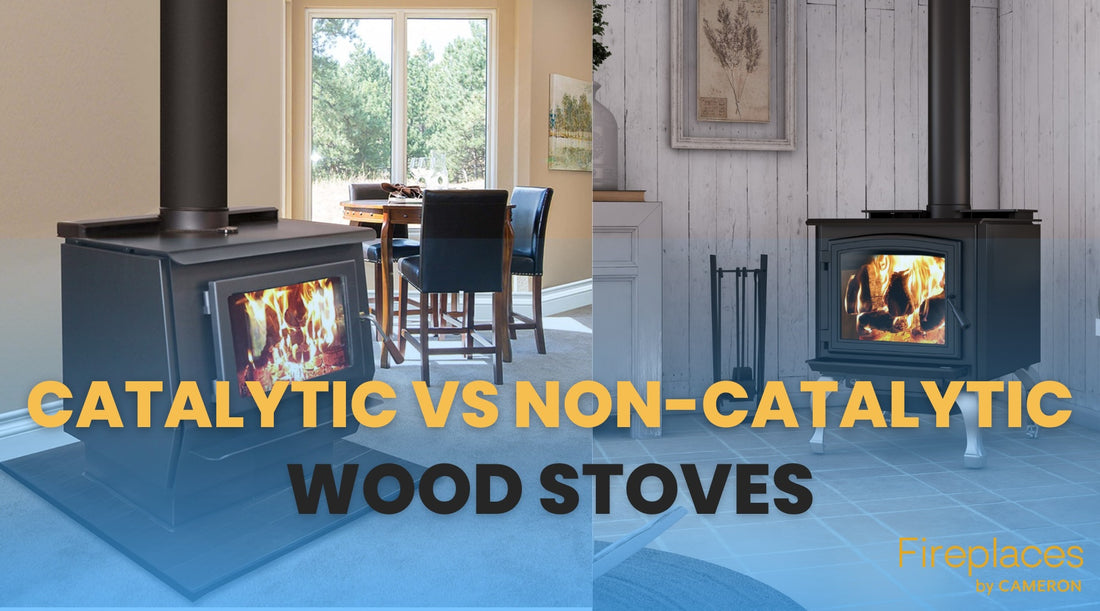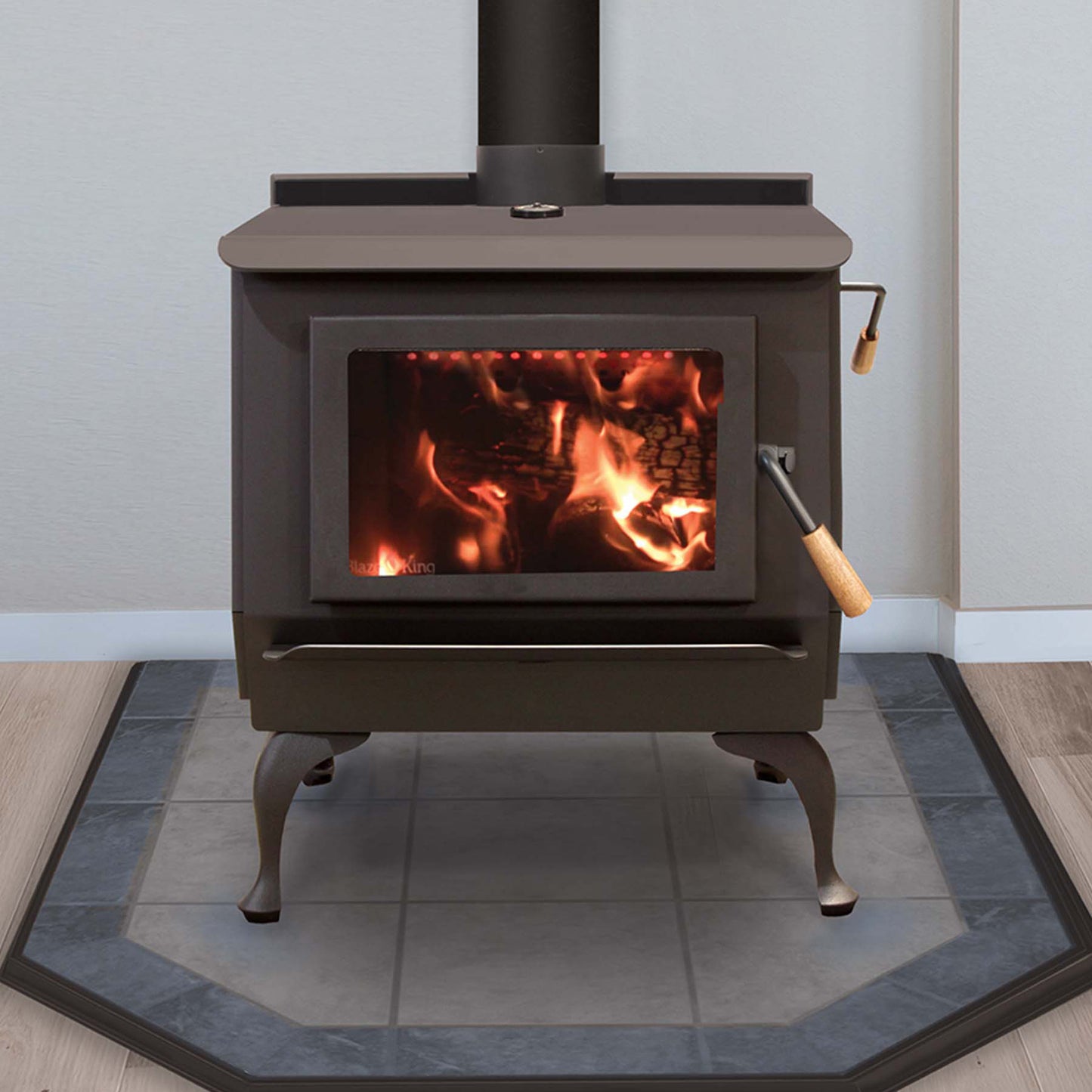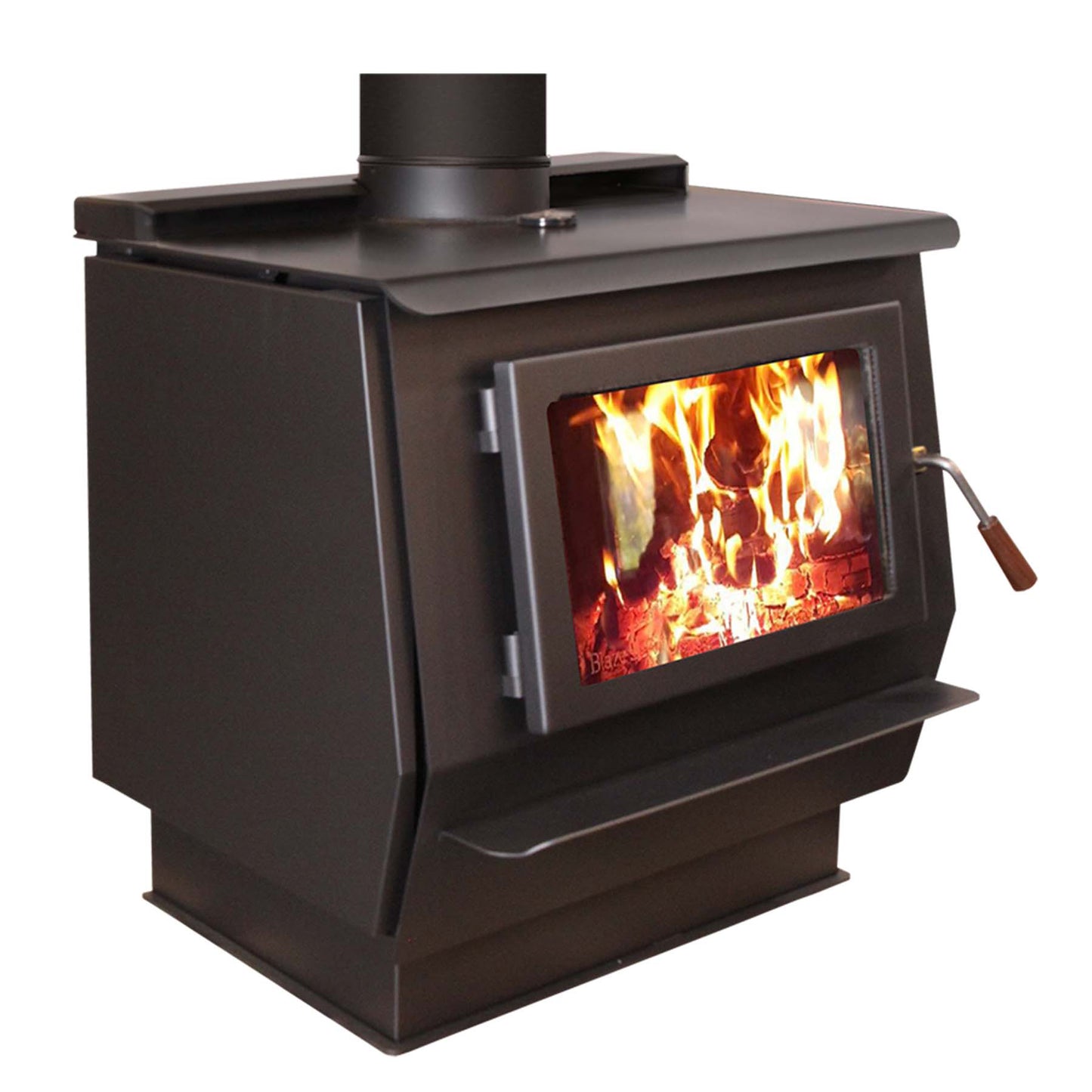
Catalytic vs Non-catalytic: Level up your wood stove knowledge
Wood-burning stoves have long been a popular way to heat homes, both for their aesthetic appeal and functional warmth. Over the years, two primary types of technology have evolved for these stoves: catalytic and non-catalytic. Let's dive into each, and we'll help you understand which wood stove is right for you.
Key Summary:
🔥If you prioritize longer burn times, higher heat output, and lower emissions, a catalytic stove may the one for you
🔥If you're on a budget, desire a livelier flame, and want a stove that's easy to maintain, a non-catalytic stove may be a better option.
What's the difference between a Catalytic Vs Non-Catalytic wood stove?
Catalytic wood stoves use a catalytic combustor to ignite smoke particles at lower temperatures, providing a longer, more even burn with greater efficiency and lower emissions. This makes them ideal for those looking for maximum heat output and fuel savings. However, they require occasional maintenance, like replacing the catalytic combustor every few years, and are usually more expensive upfront.
Non-catalytic wood stoves, on the other hand, operate with a simpler design that burns wood in a single, high-temperature process without a catalytic combustor. They are easier to operate, cost less initially, and have minimal maintenance needs. While they don’t offer as long of a burn time or the same efficiency as catalytic models, they are a practical, budget-friendly option with straightforward functionality.
What makes Catalytic Wood Stoves great?
Catalytic wood burning stoves use a catalytic combustor to reduce emissions and increase efficiency. The combustor is a honeycomb-like structure made of ceramic or metal that is coated with a catalyst, usually platinum or palladium. As smoke passes through the combustor, the catalyst causes a chemical reaction that breaks down harmful pollutants and converts them into less harmful substances.
This results in a cleaner burn, lower emissions, and increased efficiency. Catalytic stoves are known for their longer burn times and higher heat output, making them ideal for heating larger spaces or for those who require a consistent and long-lasting heat source. However, they require more maintenance and can be more expensive than non-catalytic stoves.
Looking for the an ultra high-efficiency wood stove, look no further than the Blaze King King 40.
Or try the very popular: Blaze King Princess Freestanding

Let’s break it down a bit further:
- Function & Principle: Catalytic wood stoves use a ceramic honeycombed catalyst coated with metals, often platinum or palladium. This catalyst aids the combustion process by allowing smoke and unburned particles to ignite at significantly lower temperatures, around 500°F, compared to the typical 1100°F. Essentially, the catalyst ensures that unburnt gasses and particles are ignited efficiently when the smoke passes through.
- Efficiency & Operating Temperature: Thanks to the catalyst's ability to reduce the ignition temperature of the smoke, catalytic stoves achieve a high overall efficiency, often up to 80%. They are known for their longer, steadier heat output, providing consistent warmth over extended periods.
- Longevity of Burn: One of the significant advantages of catalytic stoves is their extended burn times, ensuring a steady, even heat distribution over prolonged periods.
- Maintenance & Operation: While catalytic stoves can offer superior efficiency, they do demand more attention to maintain this performance. The catalyst, over time, will degrade and typically requires replacement every 4-6 years, contingent on the stove's usage and the quality of the wood burned. Additionally, to achieve optimal operation, users need to monitor the catalyst and engage it once the stove reaches the desired temperature.
- Example Brand: Blaze King is a reputable brand renowned for producing efficient catalytic wood stoves.
Catalytic wood stove Brands that we stock
Why do some users prefer Non-catalytic wood burning stoves
Non-catalytic wood burning stoves rely on a different combustion process. These stoves feature a secondary combustion system that introduces preheated air into the firebox, promoting the combustion of gasses and particles that would otherwise be released as smoke.
Non-catalytic stoves are generally easier to operate and maintain compared to catalytic stoves. They require less frequent cleaning and do not rely on a catalytic combustor, which needs periodic replacement. Non-catalytic stoves are often favored for their simplicity and affordability.

One of our favourites: Osburn 950
The specific of Non-catalytic stoves
- Function & Principle: Non-catalytic stoves don't rely on a catalyst for combustion. Their design features a heavily insulated firebox and secondary air tubes that introduce air to the top of the stove. This design, combined with a high burning temperature and adequate oxygen, ensures complete combustion. The preheated air ignites the exiting smoke, optimizing combustion efficiency.
- Operating Temperature: These stoves achieve complete combustion at higher temperatures, typically around 1100°F (590°C).
- Efficiency: Although non-catalytic stoves might be slightly less efficient than catalytic models, advancements in design, such as the inclusion of baffles and the aforementioned secondary combustion air tubes, have enhanced their efficiency. Modern non-catalytic stoves often have efficiencies ranging from 70% to 75%.
- Visual Appeal: A distinguishing feature of non-catalytic stoves is their livelier flame, which many find more aesthetically pleasing compared to the steadier burn of catalytic models.
- Maintenance & Simplicity: One of the notable benefits of non-catalytic stoves is their straightforward design and maintenance. They generally contain fewer components that might require replacement, leading to potentially simpler, less frequent maintenance and reduced long-term costs. There's also no catalyst to monitor or replace, making them user-friendly for homeowners.
- Example Brands: Modern wood stove models from brands like Osburn and Valcourt are typically non-catalytic.
Non-Catalytic Wood stove Brands that we stock
Efficiency: Which one is best?
When comparing strictly on the basis of efficiency, catalytic wood stoves generally have an edge over non-catalytic wood stoves.

Catalytic stoves often achieve combustion efficiencies of up to 80% or slightly more. This is because the catalyst helps to burn off more of the smoke and particles that would otherwise escape up the chimney. The catalytic combustor helps to extract more heat from the wood, resulting in less wasted energy.
While modern non-catalytic stoves are designed to be efficient, they typically have efficiencies ranging from 60% to 75%. The design enhancements, such as secondary air tubes and baffles, have improved their efficiency over the years, but they still generally lag behind catalytic models in direct comparisons.
See related: Meet the world's most efficient wood stove
In terms of emissions, catalytic stoves have the edge. The catalytic combustor helps to burn off more pollutants, resulting in lower emissions of particulate matter and harmful gasses. Non-catalytic stoves, while still meeting strict emission standards, may produce slightly higher levels of smoke and pollutants.
Catalytic wood stoves are typically more efficient than non-catalytic wood stoves, but efficiency isn't the only factor to consider when choosing a stove. Ease of use, maintenance, visual appeal, and other factors might be equally or more important for some users.
Here's a comparative table between Catalytic and Non-Catalytic Wood Stoves:

This table gives you a concise overview of the key differences between the two types of stoves
The Verdict?
Ultimately, the choice between catalytic and non-catalytic wood burning stoves depends on your specific needs and preferences. For more insights you can go check out Reddit's Woodstove page. There is some great advice on their wood stove enthusiasts
When choosing between catalytic and non-catalytic wood burning stoves, it's important to consider factors such as cost, maintenance, and environmental impact. If you're looking for the cleanest burn possible and don't mind the extra maintenance and cost, a catalytic stove may be the way to go. However, if you're on a budget and want a stove that's easy to maintain, a non-catalytic stove may be a better option.